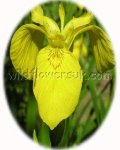 | ||
Perfect for pollinators Wood Avens –geum urbanum – grows best in the shade of woodlands and hedgerows but can also be grown in dappled shade where plants will attract bees. Wood Avens is a low growing species with yellow flowers that appear from June to September. The foliage provides ground cover for woodlands. Wood Avens looks best growing with woodland wild flowers such as Nettle-leaved bellflower, Herb Robert, and Red campion. How to grow Wood Avens Seeds Wood Avens seeds should be sown in spring or autumn, outside, where they are to flower, and covered lightly with soil. Wood Avens seeds usually germinate easily and once established plants will readily self-seed. RHS Perfect for Pollinators. The RHS Perfect for Pollinators mark is only given to plants that support pollinating insects in gardens. Bees, butterflies, moths, hoverflies and many others visit flowers to feed on nectar and pollen; while doing so they transfer pollen and increase seed set and fruit development. Find out more at: rhs.org.uk/plants To discover more plants for Bees, simply enter the word "pollinators" into the search box above. To buy Wood Avens seeds To purchase Wood Avens seeds, please select a quantity above and click add to cart. To ensure the best chance of success, we sell all of our wildflower seeds by weight, which ensures each wildflower seed packet contains a good quantity of seeds. The recommended sowing rate is 1 gram per square metre, and the number of Wood Avens seeds per gram is approx. 1400. All of our Wildflower seed packets contain seeds of Native British provenance. Summary type - perennial, colour - Yellow, height - 25 to 50cms, flowering months - June, July, August, September, habitat - Deep Shade (Dense Woodland), Semi-Shade (Orchards, Hedgerow, Banks, Open Woodland), Attracts Bees | ||
Printed 26/12/2024 23:59:37
st41_1 type perennial colour yellow height 25 to 50cms flowers june july august september habitat deep shade dense woodland semi shade orchards hedgerow banks open woodland rhs perfect for pollinators pollinating insects bees butterflies moths hoverflies







 added to basket
added to basket